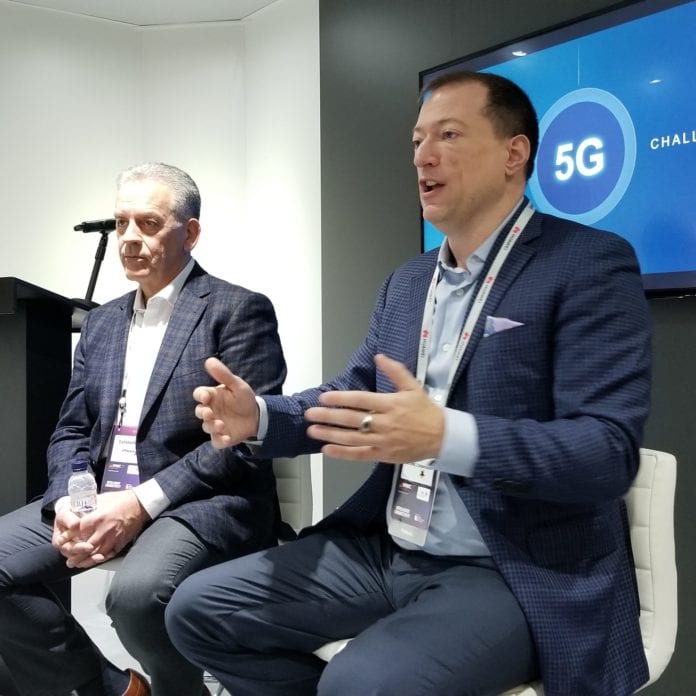Dell EMC CTO John Roese laid out a vision of the transition to 5G where the technology exists in small, mostly industrial pockets around the world for the first couple of years before becoming pervasive enough to make real inroads in the consumer space: what he described as a 5G transition that is, at least initially, a “geofenced world.” But those first deployments won’t be mere testbeds, he said — they’ll be fully commercialized offerings serving specific use cases.
“Because we don’t have pervasive 5G, we’ll have very carefully placed 5G infrastructures,” Roese said during a morning event at Mobile World Congress in Barcelona, which also included Constantine Polychronopoulos, VP and CTO for telco/NFV at VMware. But those 5G hot spots won’t be just testbeds or trials, Roese went on — they will be fully commercialized deployments serving specific niches. As an example, he pointed to the fact that while fully autonomous vehicles without human drivers haven’t made it onto public roads, they are often already used in mines or other industrial settings — and that simply providing 5G services to industry alone, or a specific industry such as mining, may be a viable deployment strategy. (Story continues below.)
“5G is going to follow that pattern,” he said. “It’s going to look for areas where we can put the infrastructure in place and fully exercise it in a constrained environment: industrial applications, IoT applications. The one that’s going on right now is home broadband. That’s very controllable, it doesn’t have a lot of permutations associated with it.”
Roese said that he expects to see about two years of such limited, but fully commercial, 5G deployments before a broadening of mobile 5G availability around 2021.
“It takes awhile for these networks to propagate,” Roese said. “Delivering a geo-scale cellular infrastructure is not a three-month exercise. But I do think the next two years, we’re not just going to see ‘kick the tires’ — we’re going to see geofenced, fairly specific use cases where this idea of high-bandwidth, low-latency, edge compute-driven, cloud-oriented mobility makes a lot of sense and we can constrain the problem space to areas where that demand exists and can be deployed and put into production. I think by 2022, we’ll have enough of this deployed in the general sense, where more of the consumer and commercial applications become legitimately deployable.”
Roese also discussed the needs of service providers and 5G technology as it is built out. Watch more of his remarks below:

